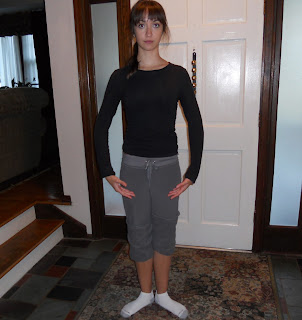With any kind of movement, muscles in the feet need some sort of stretching. Especially in ballet with all the different types of movement involved take a toll on your feet. They become tight with what ballet dancers have to endure with training. This exercise/drill not only stretches all of the muscles in the feet, but it helps build up strength and range of movement within the arch in your foot.
Stance: You can do this exercise standing or laying down. But be sure to get into a comfortable position.
Preparation: Be prepared to point and flex your toe for about 10 reps each foot.
Follow Through: It is important to keep your feet strictly in line with your ankle and hip joints. You are going to point the foot away from you. Then flex your foot back (keeping it in line with your ankle and hip joints) this time, letting the toe end of the foot come toward you.
Repeat slowly (speed of movement should be slow, as indicated in the video) as much as needed.




